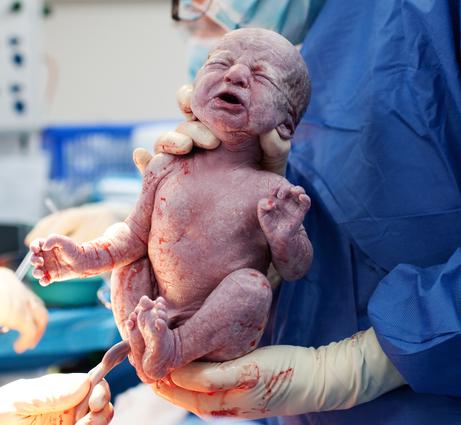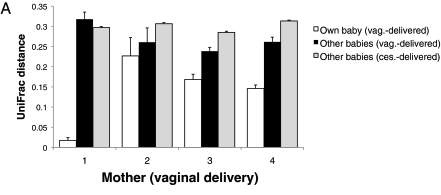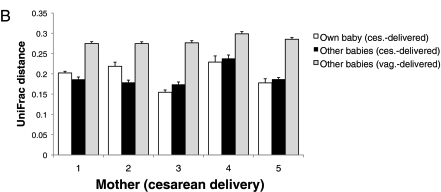
There is nothing like a good ole scientific debate about microbes to make my day. The one happening at the moment is as good as they get for one reason - good science is being done on both sides of the issue.
The hot topic of where a baby gets its bacteria (or microbiome) is scientific discourse at its best - and it's only going to get better as each side fills in their gaps and pushes the questions further.
The debate will be presented in two articles - one for each side. Here, we present the landmark paper that established the original paradigm seven years ago. This work suggests that the route of delivery of a baby (vaginal vs. cesarean) determines which bacteria will colonize their bodies. The establishment of the microbiota dictates the amount, type and variety of bacteria on and in our bodies which, we now appreciate, is an important component of our health throughout our lives.
In the landmark paper, Dominguez-Bello and Rob Knight (a visionary in the microbiome field), first sorted the bacteria sampled from 10 babies and their nine mothers into groups to see how similar the bacterial communities were. In an overall sense, the bacteria taken from the babies fell into two groups - babies who were delivered vaginally (pink dots) and babies delivered by C section (light blue dots.) The plot below presents the bacterial communities using a method called a UniFrac distance matrix which is a way to measure how similar bacterial communities are to each other. Basically, the closer the dots are to one another, the more similar they are.
Interestingly, the babies delivered vaginally (pink) had bacteria that clustered with bacteria that were similar to the mothers' vaginal bacteria (red dots) and the babies born via C section (light blue) clustered with the mothers' skin bacteria (royal blue.)

The group also tried to understand if the bacteria from a baby was specific to its mother or if all babies delivered vaginally shared the same bacteria? They sampled bacteria from the birth canal of the four mothers who delivered vaginally and the bacteria on their four babies. In this graph, the lower the bar, the more similar the bacterial community is to each other. The bars represent how similar the bacteria from the mother are to
- The mother's own babies (white column)
- Other babies born vaginally (black column)
- Other babies born by cesarean (grey column)

In three of four woman (mothers 1, 3 and 4) who delivered vaginally, the woman's vaginal bacterial community was more similar to her own baby than to other babies delivered in the same way. This suggests that the bacterial community is transferred from the mother to the baby.
The group asked the same question, but with the five mothers who delivered via C section. In contrast to the data shown above for the vaginally delivered babies, now the white bars are consistently at about the same height as the black and grey bars. The bars represent how similar the bacteria from the mother's skin are to
- The mother's own babies (white column)
- Other babies born by cesarean (black column)
- Other babies born vaginally (grey column)

This paper presented data to support the idea that the microbiome is influenced by the mode of delivery and really gave this theory legs to stand on. It also sparked many further studies on this topic, including one where babies born via C section were rubbed with a gauze that had been placed in their mother's birth canal prior to birth in order to introduce vaginal bacteria to the infant after its birth.
Although this theory has been widely accepted, there have been vocal skeptics, including Dr. Kjersti Aagaard at Baylor College of Medicine. Indeed, her group published a review last year that called into question this idea. Further, her group also published a paper last month that presents data to the contrary. It is that paper that is heightening the controversy over this hypothesis and it is there where we will pick up this story in my next article.
To be continued....
References:
Dominguez-Bello MG, Costello EK, Contreras M, Magris M, Hidalgo G, Fierer N, Knight R. Delivery mode shapes the acquisition and structure of the initial microbiota across multiple body habitats in newborns. Proc Natl Acad Sci U S A. 2010 Jun 29;107(26):11971-5.



